The start of 2023 saw a further slowing in annual house price growth to 1.1%, from 2.8% in December.
Moreover, January saw a further monthly price fall (-0.6%), which left prices 3.2% lower than their August peak (after taking account of seasonal effects).
However, there are some encouraging signs that mortgage rates are normalising, but it is too early to tell whether activity in the housing market has started to recover.
The fall in house purchase approvals in December reported by the Bank of England largely reflects the sharp decline in mortgage applications following the mini-Budget.
It will be hard for the market to regain much momentum in the near term as economic headwinds are set to remain strong, with real earnings likely to fall further and the labour market widely projected to weaken as the economy shrinks.
As we highlighted in our recent affordability report, the biggest change in terms of housing affordability for potential buyers over the last year has been the rise in the cost of servicing the typical mortgage as a result of the increase in mortgage rates, said Robert Gardner, Nationwide’s Chief Economist.
Should recent reductions in mortgage rates continue, this should help improve the affordability position for potential buyers, albeit modestly, as will solid rates of income growth (wage growth is currently running at around 7% in the private sector), especially if combined with weak or negative house price growth.
Nevertheless, the overall affordability situation looks set to remain challenging in the near term.
Saving for a deposit is proving a struggle for many given the rising cost of living, especially those in the private rented sector where rents have been rising at their strongest pace on record (on data extending back to 2005 for England).
High house prices relative to earnings mean deposit requirements remain a major challenge.
Moreover, the Help To Buy Equity Loan scheme that helped those with a smaller deposit buy a new build property is due to end in March.
However, the government’s mortgage guarantee scheme, which helps to secure the availability and lower the cost of higher loan-to-value mortgages, has been extended until the end of 2023.
| Headlines | Jan-23 | Dec-22 |
|---|---|---|
| Monthly Index* | 523.4 | 526.5 |
| Monthly Change* | -0.6% | -0.3% |
| Annual Change | 1.1% | 2.8% |
| Average Price(not seasonally adjusted) | £258,297 | £262,068 |
How does the affordability picture vary across the UK regions?
All regions have seen a deterioration in affordability compared to 2021, with the cost of servicing the typical mortgage as a share of take-home pay now at or above the long-run average in all regions.
Affordability pressures remain particularly acute in London and the south of England, where mortgage servicing costs have risen sharply compared with a year ago.
Scotland and the North continue to be the most affordable regions but, even there, mortgage payments as a share of take-home pay are at their highest level for over a decade.
There continues to be a significant gap between the least affordable and most affordable regions, although this has remained broadly stable over the last year.
London continues to have the highest house price to earnings ratio at 9.2, but this is still below its record high of 10.2 in 2016.
Scotland and the North region have the lowest house price to earnings ratios at 3.4.
Over the longer term, Northern England and Scotland have historically seen lower HPERs than Southern England, Wales and Northern Ireland.
But there is substantial regional variation, which shows the average time it would take someone earning the typical wage in each region to save a 20% deposit towards an average FTB property, assuming they set aside 15% of their take-home pay each month, Gardner concluded.
Tom Bill, head of UK residential research at Knight Frank, comments:
“The UK housing market is headed for an annual fall in prices as mortgage rates remain notably higher than 12 months ago.
To anticipate how steep, you need to look beyond the short-term distortion of the mini-Budget.
For example, buyers and sellers switched off early for Christmas but activity bounced back in January.
The resilience of prices and sales volumes will be put to the test in the spring when larger numbers of transactions take place and by which time virtually no five-year fixed-rate mortgages below 4% will remain in circulation.
We expect prices to decline 10% over the next two years as budgets get recalculated.”
Jeremy Leaf, north London estate agent and a former RICS residential chairman, comments:
“It was inevitable that house prices would continue slowing after such a strong run for most of last year but these respected numbers don’t tell the full story from the high street.
They reflect activity at the end of last year when business was slowing quite rapidly after the mini-Budget shock but was still being supported by stock shortages.
The fizz has certainly left the market, leaving behind more serious needs-driven as opposed to discretionary buyers, coming to terms with more stable mortgage rates and greater balance between supply and demand.
Looking forward, the outlook for house prices remains fairly steady with no expectation of any dramatic change.”
Tomer Aboody, director of property lender MT Finance, comments:
“As mortgage rates have been climbing, we have seen a slowdown in the marker with both buyers and sellers waiting to see some stability.
Higher rates, coupled with higher inflation, is affecting affordability and in turn either forcing buyers to be more patient or manage their purchase expectations.
Some positive signs can be seen with swap rates reducing and therefore long-term upside in the market, especially if inflation can be halved as the Prime Minister has vowed to do.”
Mark Harris, chief executive of mortgage broker SPF Private Clients, comments:
“Average property prices continue to fall month-on-month, as higher mortgage costs, along with the rising cost of living, have an inevitable impact on affordability.
The swap rate volatility sparked by the the mini-Budget has largely dissipated and fixed-rate mortgage pricing continues to fall.
Five-year fixes are now available for not much more than 4 per cent, with Virgin Money launching a five-year fix of 4.17 per cent this week.
While the markets expect a 50 basis point rise in interest rates at February’s meeting, fixed-rate mortgages are set to continue to fall, while those on variable rates will see an uptick in their monthly repayments.”
Avinav Nigam, cofounder of real estate investment platform, IMMO, comments:
“A key driver behind the slowing of house-price growth over the year to January is higher borrowing costs, since interest rates have risen in order to curb higher inflation.
Higher borrowing costs are dampening demand, and therefore house price growth. From a price-income ratio, this might look like good news on the affordability of homes.
However, it’s the opposite because at the same time, stress tests on mortgages are becoming harder to pass.
The impact of this is disproportionately felt by typically younger and poorer people who are renting and aspire to home ownership.
These people need quality, energy-efficient and safe rental homes more than ever.
Ultimately, we still have a severe shortage of quality, energy efficient housing – both for sale and for rent. Our needs have not changed: we all still need a roof over our heads.
There is an opportunity for professional investors to step in and re-capitalise the market, including helping to improve the quality and energy performance of existing housing.”
Jason Ferrando, CEO of easyMoney, comments:
“Much like the rest of us, the property market usually takes a little time to find its feet in January following a festive lull in activity.
So a slightly more sluggish rate of house price growth is only to be expected.
While another monthly reduction in the rate of house price growth further adds to the narrative of doom and gloom that enveloped the market during the closing stages of 2022, the outlook for this year is already predominantly more positive.
The market as a whole seems to be marching on with a renewed spring in its step and while it may take time for this positivity to stimulate topline market statistics, we’re already seeing buyers and sellers acting with far greater intent.”
Director of Benham and Reeves, Marc von Grundherr, comments:
“The decline in house prices seen in recent months is more akin to the market tripping over its shoelace than falling off a cliff edge and we’ve simply not seen the catastrophic property market decline that was so widely predicted during the latter stages of last year.
Yes, buyers are treading with caution and sellers are having to adjust their price expectations in line with this changing market, but our appetite for homeownership remains strong and we continue to see activity despite wider economic turbulence.”
Managing Director of Barrows and Forrester, James Forrester, comments:
“Home sellers are continuing to secure a very good price in current market conditions and it’s important to remember that although house prices have started to cool, they remain there or thereabouts when compared to the meteoric highs of the pandemic market boom.
So not only is the current correction very much a return to market normality, it’s fair to say that this return is taking far longer than predicted as the market continues to defy wider expectations against what are otherwise strong economic headwinds.”
Managing Director of House Buyer Bureau, Chris Hodgkinson, comments:
“While the market remains fairly strong, we can expect the herd mentality of the nation’s homebuyers to continue to dampen house price growth.
During the pandemic boom, homebuyers were falling over themselves to offer above the odds to secure a home.
This tide has very much turned and while there remains a robust level of market activity, we’re seeing a more reserved approach during the negotiation stage.
As a result, the nation’s sellers are meeting in the middle and accepting a slightly lower price for their home, but this is very much a market correction rather than a slippery slope of house price depreciation.”
CEO of Octane Capital, Jonathan Samuels, comments:
“The landscape is already considerably more settled when compared to the turmoil that followed last September’s mini budget and while buyers may still be contending with higher mortgage repayments, the cost of borrowing has started to stabilise.
This has allowed those who are in the market to reassess just what they can afford before pushing on in search of a property, instead of abandoning their plans altogether and so we can expect a slower, but more consistent property market performance going forward.”




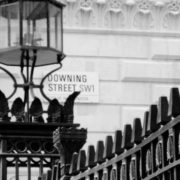
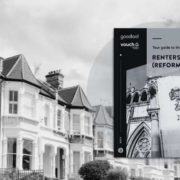


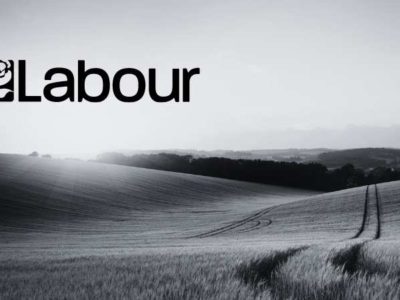

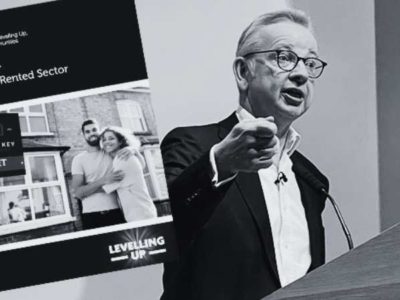


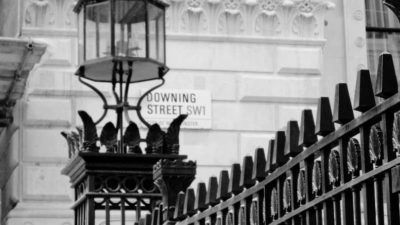
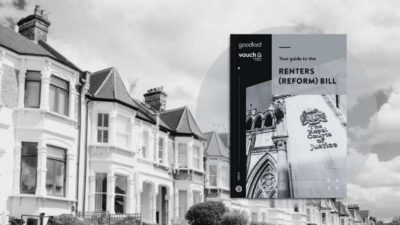






Comments